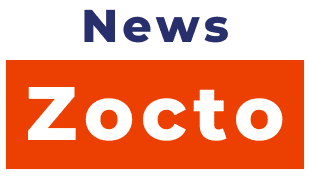In a world where health is often touted as our greatest wealth, access to quality diagnostic services can feel like the golden key to unlocking the door to better health outcomes. Diagnostic services, ranging from lab tests to imaging, are essential for early detection and effective treatment of diseases. However, the policies governing these services play a pivotal role in determining who has access to them. In this article, we explore how policy impacts the accessibility of diagnostic services and how thoughtful changes can bridge the gap, making these critical tools available to everyone.
Unlocking Doors: How Policy Shapes Diagnostic Access
Policies surrounding healthcare often act as gatekeepers to essential services, including diagnostics. Regulatory frameworks dictate various aspects, such as the availability of tests, the qualifications of personnel administering them, and the technologies employed. When policies are well-designed, they can facilitate access by ensuring that diagnostic services are both widely available and economically feasible. Conversely, restrictive policies can create barriers, such as high costs and limited availability, leading to health disparities among different populations.
Moreover, landmark regulations, such as the Affordable Care Act in the United States, have significantly expanded coverage for diagnostic services. By mandating preventative care and reducing out-of-pocket expenses, these policies have opened the doors for many individuals who previously faced barriers. This not only improves individual health outcomes but also contributes to the overall health of communities, making it vital for policymakers to continually assess the impact of their regulations on diagnostic access.
The role of technology in diagnostics is another area where policy can make a difference. Policies encouraging innovation can lead to the development of more accessible and affordable diagnostic tools, such as point-of-care tests or telemedicine solutions. As technology advances, policies must adapt and support the integration of these innovations into the healthcare system, ensuring that they are available to all, regardless of socioeconomic status.
Bridging the Gap: Making Diagnostics Accessible for All!
As we move further into the 21st century, the need for equitable access to diagnostic services has never been more pressing. Policymakers and healthcare advocates have recognized that gaps still exist, particularly in rural or underserved areas where access to healthcare facilities can be limited. By implementing targeted policies that focus on community health centers, mobile testing units, and telehealth, we can work towards bridging these gaps and providing diagnostic services to those who need them the most.
Community involvement plays a crucial role in making diagnostics accessible. Policymakers can collaborate with local organizations to identify the specific needs of communities and tailor diagnostic services accordingly. Engaging with community leaders and health workers can help design programs that are culturally sensitive and accessible, ensuring that the services are not only available but also utilized. Education campaigns can further empower individuals to seek diagnostic services, breaking down the stigma often associated with certain tests and encouraging a proactive approach to health.
Furthermore, the integration of policies that address social determinants of health will be pivotal in ensuring comprehensive access to diagnostic services. By considering factors such as transportation, education, and economic stability, policymakers can create holistic approaches that remove barriers to care. By fostering collaboration between various sectors—healthcare, education, transportation, and social services—we can create a supportive environment that makes diagnostic services truly accessible for all.
In conclusion, the interplay between policy and the accessibility of diagnostic services is crucial in shaping the future of healthcare. While we’ve made significant strides in unlocking doors for many, there is still much work to be done in bridging the existing gaps. By embracing innovative policies that prioritize equitable access, we can ensure that diagnostic services become a universal right, empowering individuals to take charge of their health and well-being. Together, let’s continue to advocate for policies that illuminate the path to accessible diagnostics for everyone, creating healthier communities and brighter futures!




